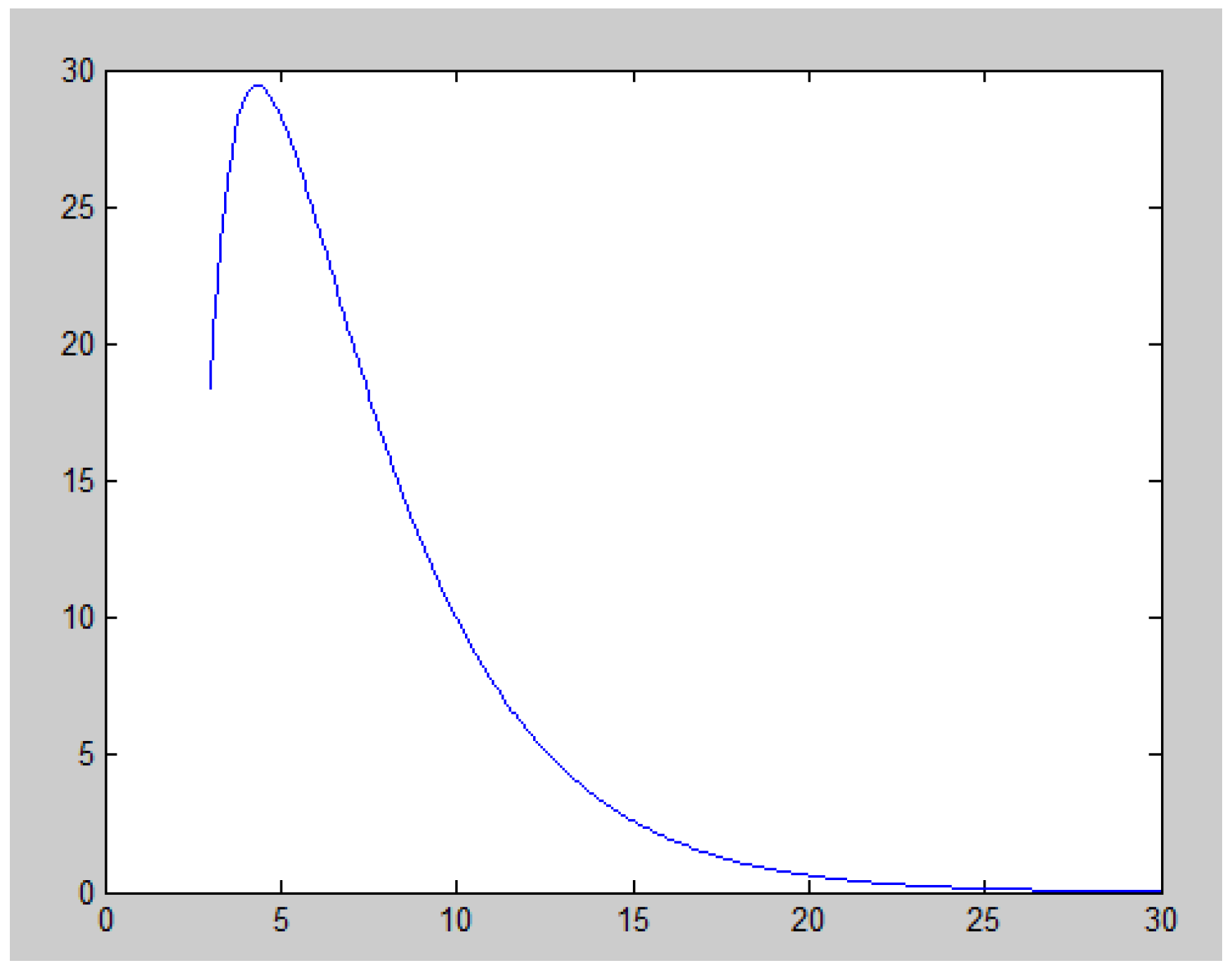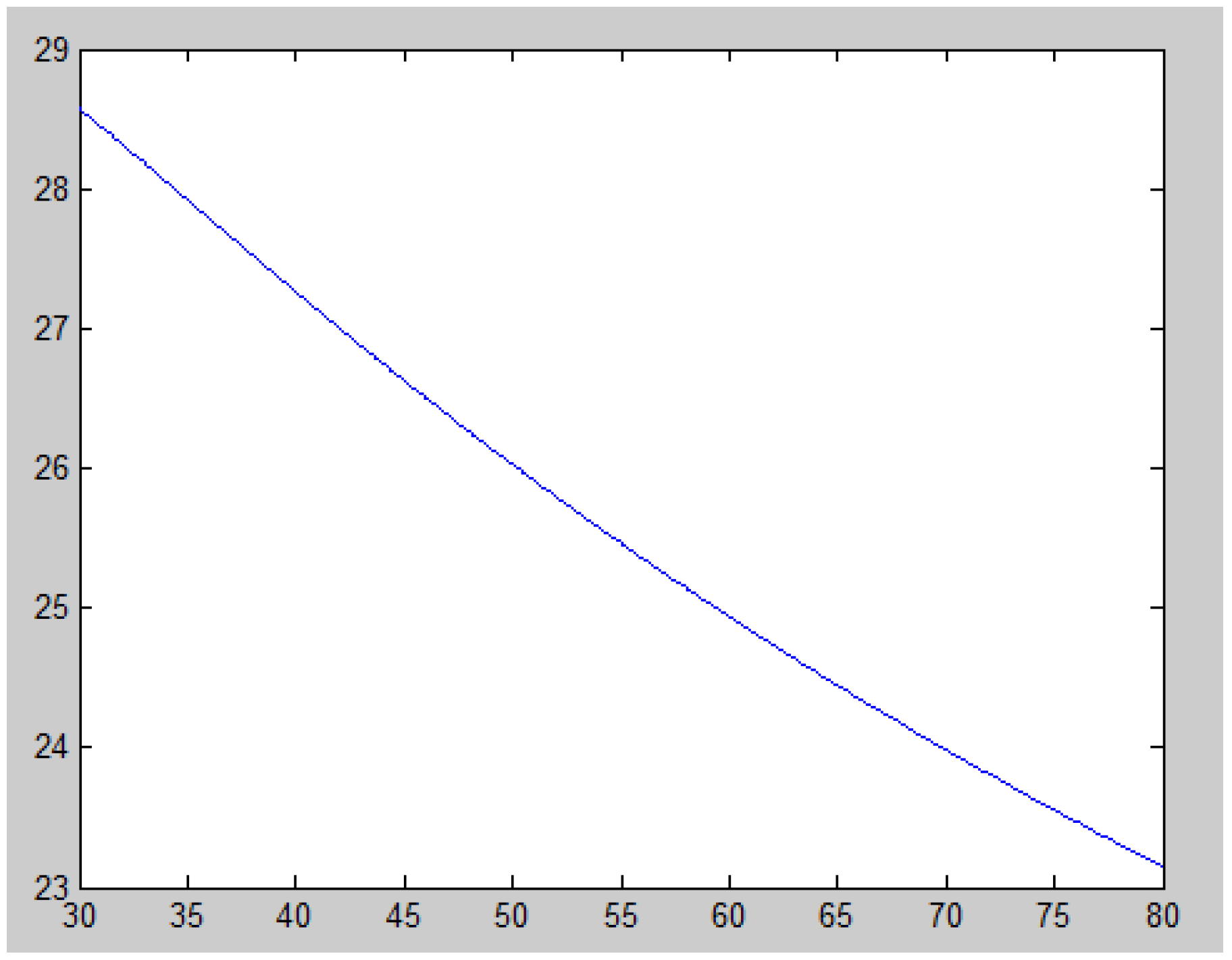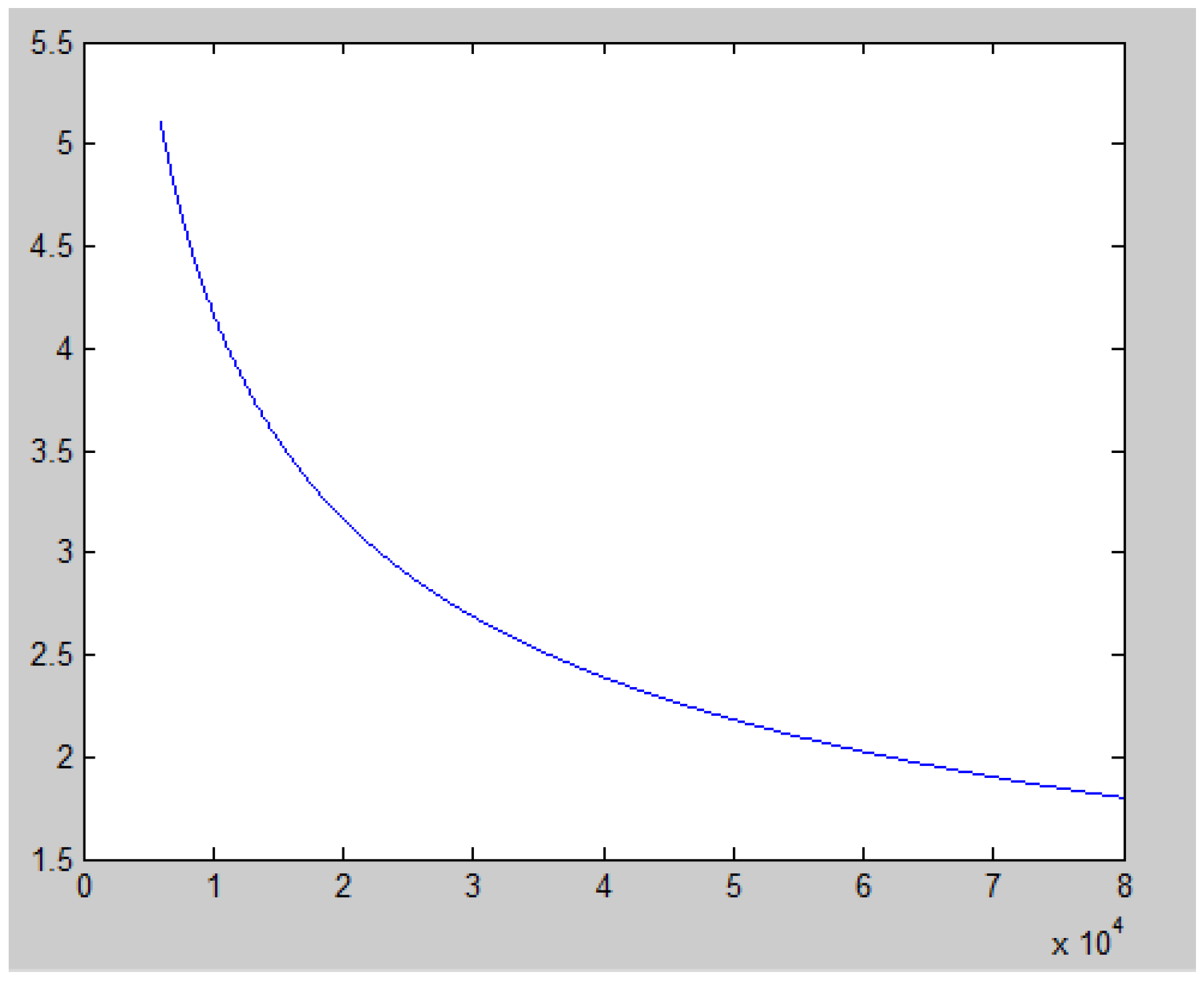3.1. G Is an Affine Type Group
Corollary 1. G is not isomorphic to .
If , then , which is a contradiction to the condition of .
If and , by Lemma 6, we have and combining the condition of the parameter satisfies condition . It is clear here that these are not possible if . Because of Lemma 2 (2), we have 29|b, but (where means that cannot be divisible by 29), which leads to a contradiction. Corollary 1 is impossible.
Corollary 2. G is not isomorphic to .
Here . If then and by the proof of the above Corollary 1, none of the designs satisfying the above conditions exist. Now we assume . Let be a set of bases of vector space . Therefore, the dimension of the subspace generated by any 7 points in vector space is at least 3. Let be a vector subspace generated by the base vectors and be any 7-subset of . By the definition of t-design, for a 7-design, each 7-subset is contained in exactly 3 blocks and we record these three blocks as Thus, If contains a vector and , then by the transitivity of on the vector space , we have and
Therefore, we have or , on the other hand, by Lemma 5, we have , so . As the same proof method of Corollary 1, we can rule out this case.
Corollary 3. G is not isomorphic to .
Here and for and the possible value of k is 8, 9, 10, or 11 by calculation. The corresponding r are not positive integers. This is impossible.
Thus, Corollary 3 is not possible.
3.2. G Is an Almost Simple Type
Corollary 4. G is not isomorphic to
Since D is a non-trivial 7-design, then, by Lemma 4, . Of course, we have , so acts v-2-transitively on D, and then G is k-transitive on D. It means that D contains all k-subsets and D is a trivial design, a contradiction.
Corollary 5. G is not isomorphic to
Here, and For , .
For
then
. By Lemmas 2 (1) and 7, we have
and
After simplification, we obtain the following:
Using Lemma 5 again, then
Add Equation (4) into Equation (3), we have
Additionally, by Equation (4), we can obtain an Inequality (6) under the conditions of ,
By Equations (5) and (6) and Lemma 6, we have
Now we are going to discuss it in three steps.
1.
Here . By , we know , so
Now, we construct an auxiliary function as follows:
Equation (9) is a decreasing function of
e (
). Using a computer to calculate, we find that
. Using MATLAB software, we map
Figure 1 and
Figure 2 as follows (see
Appendix A and
Appendix B):
For
, by properties of a decreasing function, we obtain
. As a result, the corresponding values of
q and
v are as shown in
Table 1.
Since and . By Equation (3), the possible values of v and k are only one of the following three kinds , (131073,8), and (262145,8). They are all in contradiction with the hypothesis .
Now, we are going to discuss the case that
k is less than 27. We can introduce Inequality (10) with Equation (3) and
:
Then, is an increasing function of e, and the maximum value of is It can be calculated that the maximum value of e is . Due to and the minimum value of e is .
Again, with Equation (3), we have
and
The admissible parameter sets (with Inequality (12) and Lemmas 3–6) are shown in
Table 2.
At last, the admissible parameter sets (
v,
k) in
Table 2 do not satisfy Equation (11). Therefore, we show that it does not occur.
2.
The proof is similar to the above. However, here
, and by
, we have
. Correspondingly, we can construct the following auxiliary function:
Similar to the proof method of the above, we can rule out it.
3. and p is a prime.
Since and then If then , and . By Inequality (7), we have
For binding Inequality (11), the range of possible values of q is . Accordingly, the values of k satisfy the condition . For each pair (q, k), there is no corresponding design by Lemma 2.
In a word, if , and , cannot act block-transitively on any designs.
Now, we discuss the case of . By Equation (3),
After calculating, the prime number that is suitable for the above inequality does not exist.
In summary, Corollary 2 is not possible.
Corollary 6. G is not isomorphic to .
By inequality and Lemma 2 (4), we know that admissible parameter sets are 7–(11, 8, 3), 7–(12, 8, 3), 7–(22, 8, 3), 7–(23, 8, 3), 7–(24, 8, 3), and 7–(22, 9, 3), 7–(22, 10, 3).
By Lemma 3, if , we have
For parameter set 7–(11, 8, 3), Equation (16) does not hold if we take , and 7–(11, 8, 3) design does not exist.
For parameter sets 7–(12, 8, 3), 7–(22, 8, 3), 7–(22, 9, 3), and 7–(22, 10, 3), Equation (16) does not hold if we take , thus neither of these four designs exist.
For parameter sets 7–(23, 8, 3), Equation (16) does not hold when , and this design does not exist.
At last, using Lemma 2, we have
For parameter sets 7–(24, 8, 3), the right side of Equation (17) can be divisible by 19, so b can be divisible by 19. By Lemma 7, can be divisible by 19, but if (where a = 1 or 2), this is impossible. Therefore, the 7–(24, 8, 3) design does not exist.
Corollary 7. G is not isomorphic to .
By the proof of Corollary 3, we know that this case will not occur. In this way, we have completed the proof of the main theorem.









